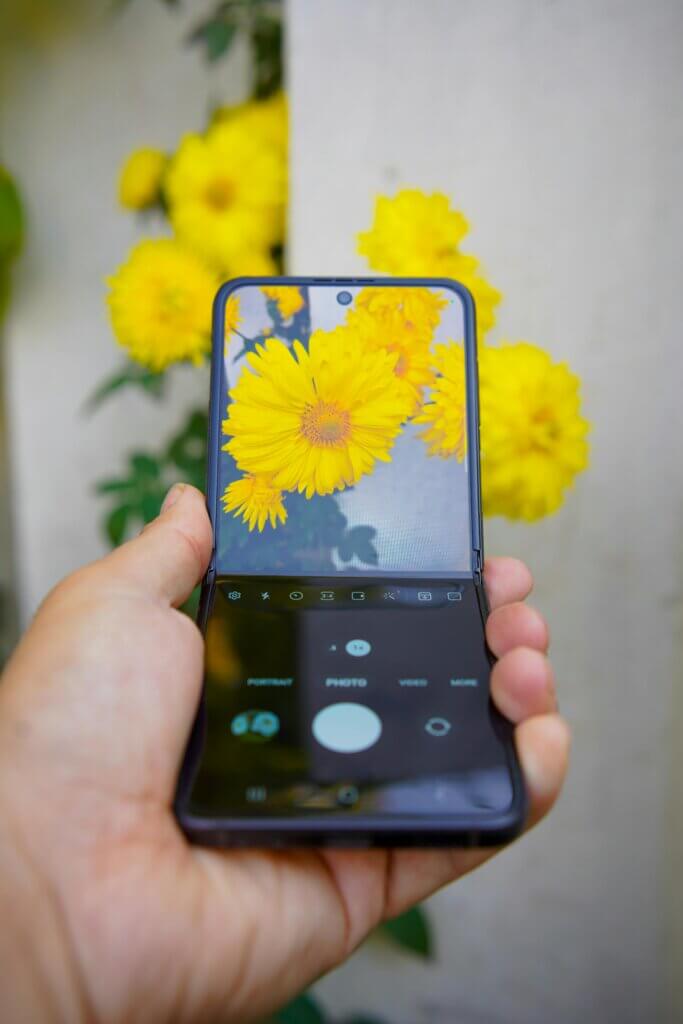After reading this article, you’ll:
- Understand minimalist app design principles and why they’ve become dominant in modern digital products, with their focus on clarity, purposeful functionality, and clean interfaces
- Learn the concrete benefits of minimalist design, including reduced cognitive load, improved performance, faster load times, and higher user retention rates
- Recognize common challenges in implementing minimalist design (like oversimplification) and how to overcome them through careful planning, testing across devices, and continuous user feedback

Minimalist design has become a major trend in the world of mobile apps and digital products over the past several years. Many designers now embrace minimalism as their primary aesthetic approach. But minimalist app design isn’t just a fleeting trend—it’s an extremely effective strategy for enhancing the user experience and improving engagement.
Overly complex and cluttered app interfaces can overwhelm users, making applications difficult to navigate and utilize. This leads to frustration for customers, resulting in poor retention rates and lackluster engagement levels. Minimalism provides a solution to this problem by emphasizing clarity, purposefulness, and simplicity at every stage of the design process. Apps with clean, intuitive interfaces tend to foster positive user experiences, facilitate better onboarding and feature adoption, and boost key metrics like engagement and retention.
In this article, we’ll explore the core principles of minimalist app design and how to leverage minimalism to create mobile experiences users love.
What Is Minimalist App Design?
 Minimalism has become a major app design trend, but what exactly does it mean to take a “minimalist” approach? At its core, minimalist app design embraces principles like clarity, simplicity, and purpose-driven functionality above all else.
Minimalism has become a major app design trend, but what exactly does it mean to take a “minimalist” approach? At its core, minimalist app design embraces principles like clarity, simplicity, and purpose-driven functionality above all else.
In practical terms, minimalist apps tend to share some key characteristics. They utilize clean, sparse interfaces with plenty of white space instead of crowded designs. Color palettes are limited, typically sticking to one or two primary colors. The focus is on intuitive navigation and seamless user flows rather than flashy visuals for their own sake. As a result, there is less emphasis on decorative graphical elements. Core functionality takes center stage.
By embracing “less is more,” minimalist apps aim to enhance usability and eliminate distractions. Every design choice focuses on enhancing user experience and engagement. So, while minimalist interfaces may appear simple on a surface level, great care and planning are required to make an app this straightforward and frictionless. When implemented effectively, minimalism allows apps to better serve customer needs.
Why Minimalism Matters in App Design
Minimalism in app design provides tangible benefits that directly impact key metrics like user experience, performance, and retention. As apps continue to saturate the market, embracing minimalism can be a key competitive advantage.
By streamlining interfaces, minimalist apps reduce cognitive load for users. Simple, intuitive designs allow them to focus on their goals without wasting mental energy figuring out navigation flows or deciphering confusing interfaces. This facilitates faster onboarding and feature adoption. New users can dive right in rather than getting distracted by superfluous design elements.
On a technical level, lightweight minimalist interfaces also improve performance through quicker load times. Eliminating unnecessary graphical elements keeps file sizes small. Efficient information hierarchy prevents workflows from getting bogged down. The result is snappier response times and smooth interactions.
Visual appeal and ease-of-use also work together to boost user retention. Clean, uncluttered interfaces feel more welcoming and are less overwhelming. When users can intuitively find what they need, they’re more likely to have a positive experience that brings them back. Leading with strong aesthetics and frictionless interactions results in higher loyalty.
Minimalist design allows apps to better serve users across multiple fronts—reducing friction, accelerating workflows, and boosting engagement. That’s why it should be a primary consideration rather than an afterthought.
Principles of Effective Minimalist Design
When embracing minimalism, designers must carefully consider how to distill an app down to only the most essential elements. This requires focusing on core functionality aligned to primary user goals while enhancing visual clarity.
Successful minimalist design starts by identifying the one or two main tasks users will perform in the app. Avoid feature creep by eliminating any tools or options that don’t directly enable those high-priority use cases. Every additional element comes at the cost of complexity—if it’s non-essential, remove it.
Creating visual hierarchy is also extremely important, as minimalist interfaces rely heavily on negative space. Strategically employ typography, spacing, and alignment to guide the user’s attention in order of importance. This establishes clear relationships between elements while preventing confusion.
Consistency in layout, formatting, symbology, and stylistic choices also keeps interactions smooth. When branding, icons, navigation, and information architecture follow the same logical rules throughout, it’s easier for users to establish mental models of how the interface works.
Use color, iconography, and graphics judiciously to indicate interactions or call attention to key pieces of information without overwhelming the canvas. These elements should aid comprehension rather than distract from primary content.
In these ways, designers can embrace minimalism successfully by doubling down on the aspects that matter most to user goals while eliminating extraneous factors. Distilling functionality down to its absolute essence is what makes minimalism so powerful.
Challenges and How to Overcome Them
While minimalism offers many benefits, designers should also be aware of common pitfalls when stripping down interfaces. Fortunately, these challenges can be overcome through careful planning and testing.
The biggest risk is oversimplification—removing essential functionality in pursuit of simplicity. Designers must strike the right balance between minimalism and meeting all user requirements. Ensure vital features are still accessible even as visual clutter is removed. Frequently revisit primary user goals to verify needed tools are still available.
Designers should also plan for screen sizes and devices. A minimalist interface on a desktop may feel too sparse when ported directly to mobile. Adapt layouts, adjust targeting on buttons, leverage responsive frameworks, and thoroughly test across intended platforms. Minimalism takes more considered effort than complex interfaces to work seamlessly across contexts.
No design is set in stone, so designers should continually gather usage data and user feedback post-launch. Monitor analytics to catch missing features and address points of struggle. Use heat maps to see where users tap and scroll. This allows refinement of interactions without compromising the clean aesthetic.
With vigilance, testing, and a user-centered process, designers can overcome potential downsides. The diligence required to “get simple” enables creation of interfaces that feel effortless to the end user, driving adoption and loyalty.
How to Partner with the Right Developer for Minimalist Design
Embracing minimalism requires a developer who understands the nuances of crafting straightforward, functional interfaces. Key qualities to seek out include:
- Experience specifically with UX/UI design focused on minimalist aesthetics. Their portfolio should showcase intuitive, uncluttered app designs.
- Case studies demonstrating seamless user flows that balance simplicity with meeting complex requirements.
- Testimonials speaking to their collaborative iterative process. Minimalism requires continually refining and editing to reach simple final products, so you need a partner open to feedback cycles.
The right developer will work closely with you to carefully edit and build upon wireframes until reaching a streamlined interface true to your brand and user goals.
When implemented effectively, minimalist design can greatly enhance app usability, user retention, and performance. Clean, lightweight interfaces reduce friction while fostering positive user experiences that keep customers coming back.
However, achieving simplicity requires vigilant planning. Successful execution depends on continually optimizing until only the most essential components remain.
If embarking on a new mobile app or revamping an existing product, contact us for a consultation on leading with minimalism tailored to your specific needs and users.
FAQs about Minimalist App Design
What exactly is minimalist app design?
Minimalist app design is an approach that emphasizes clarity, simplicity, and purpose-driven functionality. It features clean interfaces with ample white space, limited color palettes (typically one or two primary colors), and intuitive navigation. The focus is on core functionality rather than decorative elements, following the principle of “less is more” to create a more streamlined user experience.
Why should I consider minimalist design for my app?
Minimalist design offers several key benefits:
- Reduces cognitive load for users, making the app easier to navigate
- Improves technical performance with faster load times
- Increases user retention through better user experience
- Facilitates faster onboarding and feature adoption
- Creates a more welcoming and less overwhelming interface
- Enhances overall engagement metrics
How do I prevent oversimplifying my app when implementing minimalist design?
To avoid oversimplification while maintaining minimalist principles:
- Identify and preserve essential functionality that aligns with primary user goals
- Regularly test and gather user feedback
- Monitor analytics to catch missing features
- Use heat maps to understand user behavior
- Maintain balance between simplicity and meeting all user requirements
- Continuously verify that vital features remain accessible
What are the key characteristics to look for when hiring a developer for a minimalist app design?
Look for a developer who has:
- Specific experience with UX/UI design focused on minimalist aesthetics
- A portfolio showcasing intuitive, uncluttered app designs
- Case studies demonstrating successful simple user flows
- Testimonials about their collaborative and iterative process
- Willingness to engage in feedback cycles and continuous refinement
How do I ensure my minimalist design works across different screen sizes and devices?
To ensure cross-device compatibility:
- Adapt layouts specifically for different screen sizes
- Adjust button targeting for various devices
- Leverage responsive frameworks
- Conduct thorough testing across all intended platforms
- Consider how sparse layouts might appear on different screen sizes
- Make necessary adjustments to maintain usability while preserving the minimalist aesthetic





